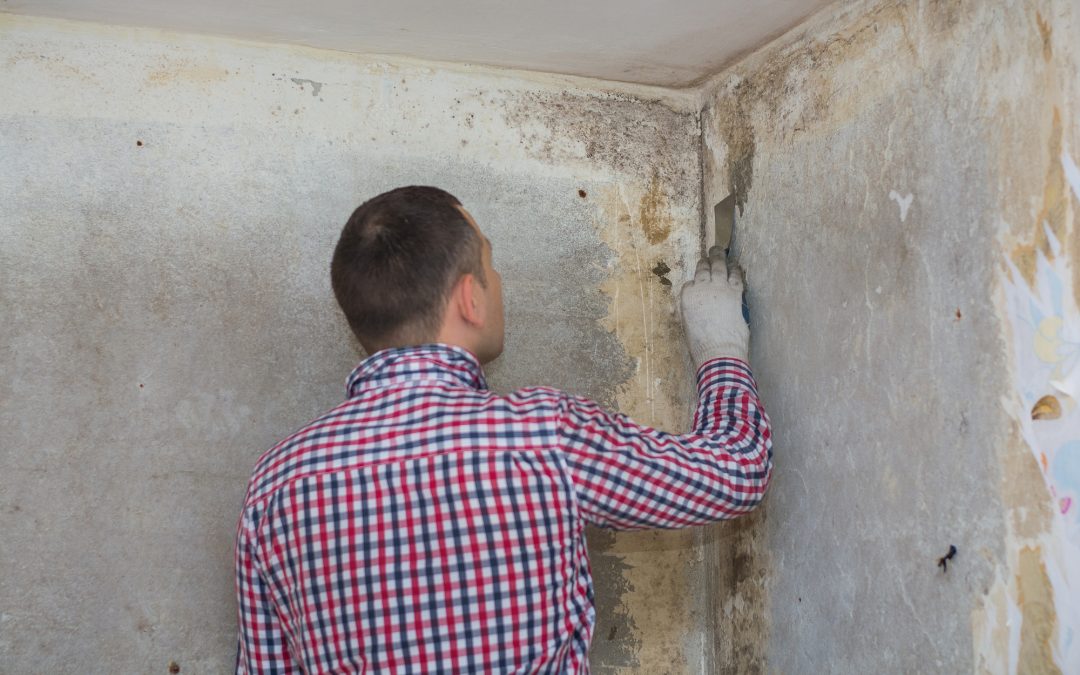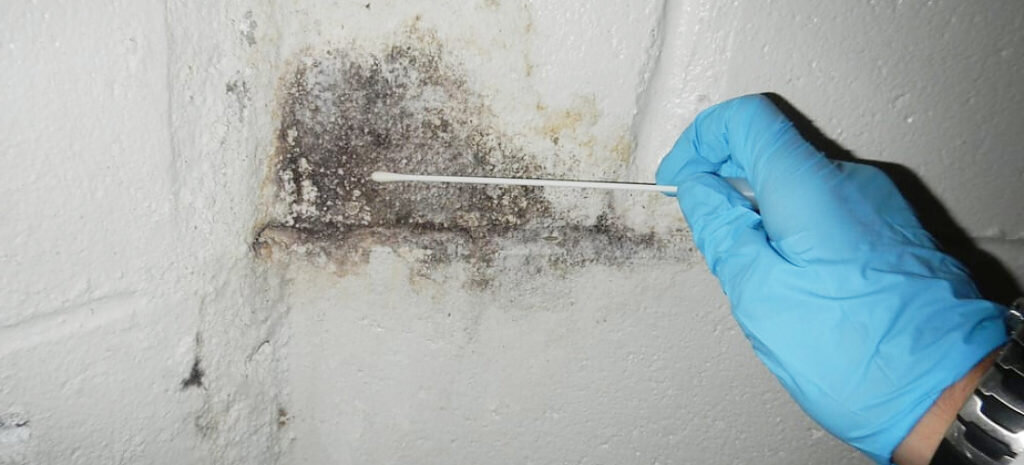Assistance on What to Do After Mold Remediation
Wiki Article
Key Tips for Effective Article Mold Removal
Attending to mold and mildew problems in a timely and effective way is critical for keeping a healthy and balanced indoor environment. Efficiently finishing mold remediation is a complex procedure that requires interest to information and adherence to specific protocols. From evaluating treated areas to carrying out wetness control steps, each action plays a critical duty in making sure the effectiveness of the remediation process. However, there are vital post-remediation steps that are equally crucial but often forgotten. These steps not just verify the success of the remediation initiatives however also add to protecting against future mold and mildew growth.Inspection of Treated Locations
Upon conclusion of the mold remediation procedure, a complete inspection of the treated locations is vital to make sure the effectiveness of the remediation efforts. This assessment functions as an important step in the post-remediation phase to verify that the mold and mildew elimination and cleaning procedures achieved success in removing the mold and mildew infestation and restoring a safe indoor atmosphere. The assessment needs to be conducted by qualified experts that have the proficiency to evaluate the remediated locations thoroughly.During the assessment, different factors are assessed to identify the success of the removal procedure. These consist of aesthetic analyses to examine for any kind of indicators of mold and mildew development or water damage, wetness levels to confirm that the area is dry and totally free of excess humidity that might advertise mold re-growth, and air quality testing to ensure that the indoor air is secure to take a breath. Furthermore, the examination may involve using specialized tools such as moisture meters and thermal imaging video cameras to spot concealed mold or moisture pockets that can cause future mold and mildew issues if left unattended. In general, a comprehensive inspection of the dealt with areas is important to validate the performance of the mold and mildew remediation initiatives and supply peace of mind to the occupants of the property.

Dampness Control Actions
Reliable moisture control steps are vital for stopping mold and mildew development and preserving a healthy and balanced interior atmosphere. To accomplish this, it is crucial to deal with sources of dampness within the structure. Correct air flow is vital to regulating moisture degrees. Mounting exhaust fans in shower rooms and cooking areas can assist eliminate excess wetness. Additionally, utilizing dehumidifiers in moist areas can help in reducing humidity degrees, making it harder for mold to flourish.On a regular basis preserving the building and checking's exterior can additionally stop wetness breach. Post Mold remediation cleaning. Guaranteeing that seamless gutters are clear, downspouts direct water far from the foundation, and the roof covering is in excellent condition can assist prevent water from permeating into the building. Properly securing doors and windows can also assist maintain wetness out
Any kind of leaks or spills ought to be cleaned up and dried out within 24-48 hours to protect against mold and mildew growth. By implementing these wetness control steps, the risk of mold repeating can be dramatically reduced, creating a healthier indoor environment.
Appropriate Air Flow Evaluation
An essential facet of making sure a healthy interior atmosphere post view website mold and mildew remediation is performing an extensive analysis of the ventilation system. Correct ventilation analysis plays an important role in stopping future mold and mildew growth and keeping air quality within the damaged space.Additionally, evaluating the air flow system includes checking out the distribution of air throughout the location to recognize any type of locations of poor blood circulation where moisture and pollutants could build up. Correct ventilation not just helps in managing humidity degrees however additionally aids in getting rid of airborne mold and mildew spores and other contaminants, thereby improving general interior air quality. By dealing with any kind of air flow issues publish mold and mildew remediation, home proprietors can develop a healthier and a lot more comfy setting for residents while lowering the danger of mold and mildew re-infestation.
Cleansing and Sanitation Protocols
To ensure detailed mold and mildew removal, meticulous official website adherence to certain cleansing and disinfection procedures is crucial. Cleansing and disinfection protocols play an important function in the post-mold removal phase to avoid the reappearance of mold and mildew development and guarantee a risk-free and healthy and balanced atmosphere. The very first action in this process is the removal of any type of visible mold development making use of ideal cleansing representatives and methods. It is necessary to utilize EPA-approved fungicides and anti-bacterials to successfully get rid of mold spores and avoid their regrowth.Furthermore, applying preventive procedures such as using mold preventions and maintaining appropriate ventilation can aid minimize the danger of future mold and mildew problems. By following strict cleansing and sanitation protocols, residential property proprietors can ensure the successful removal of mold and mildew and develop a healthy and balanced indoor environment for residents.
Surveillance and Upkeep Strategy
Executing a routine surveillance and upkeep strategy is essential for making certain the long-term efficiency of mold removal efforts. Once mold and mildew removal is finished, it is critical to develop a surveillance timetable to review the success of the removal procedure. This entails routinely checking the previously impacted areas for any indicators of mold and mildew reappearance or water damages. By carrying out routine checks, any type of new mold development can be without delay recognized and resolved, protecting against a reoccurrence of the first issue.Furthermore, developing an upkeep plan is key to stop future mold issues. This strategy may include actions such as dealing with pipes leakages, enhancing air flow, and managing indoor moisture levels. Normal maintenance not just helps in protecting against mold and mildew but also adds to keeping a healthy indoor atmosphere. It is advisable to record all monitoring and maintenance tasks to track progress and make certain uniformity in the maintenance of the remediated locations. By implementing a thorough monitoring and upkeep strategy, the risk of mold and mildew re-emergence can be significantly minimized, promoting a clean and safe living or workplace.
Conclusion
In conclusion, successful message mold remediation involves extensive assessment of treated areas, implementation of dampness control actions, analysis of appropriate ventilation, adherence to cleansing and sanitation methods, and establishment of a tracking and upkeep strategy. These essential steps are essential to make certain that mold and mildew growth is effectively removed and stopped from persisting in the future. By complying with these standards, homeowner can maintain a healthy and balanced and risk-free environment for owners.Upon completion of the mold and mildew remediation procedure, a thorough examination of the treated locations is necessary to guarantee the performance of the remediation initiatives. These include aesthetic assessments to inspect for any indications of mold development or water damage, wetness degrees to verify that the location is totally free and completely dry of excess humidity that might advertise mold re-growth, and air high quality screening to guarantee that the interior air is safe to breathe. In addition, the evaluation might entail using hop over to here specialized devices such as dampness meters and thermal imaging cameras to detect covert mold and mildew or wetness pockets that can lead to future mold and mildew issues if left uncontrolled. By attending to any kind of ventilation concerns post mold remediation, property owners can produce a much healthier and extra comfortable environment for residents while minimizing the threat of mold and mildew re-infestation.

Report this wiki page